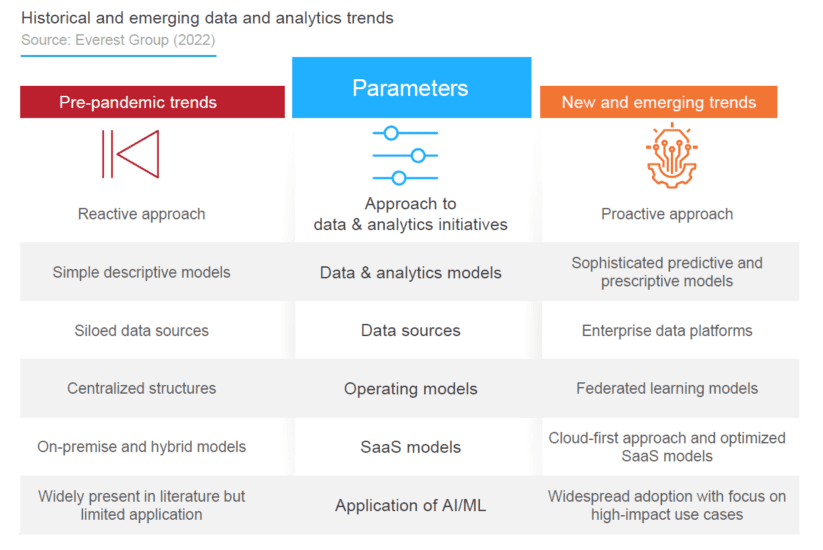Vaccine development became the top priority for the life sciences industry – delivering new vaccines at unprecedented speed and maneuvering large-scale production processes . Numerous factors helped accelerate the vaccine roll-out including prior research, genome sequencing, jumping the FDA approval queue and a plethora of testing volunteers. So now that we’ve experienced these advancements, how can the industry keep momentum to speed-up innovative solutions across healthcare?
The Impact of Data and Analytics
Advancements in data and analytics played a critical role in the vaccine acceleration and has the potential to do the same across the industry. Decentralized clinical trials generated large quantities of patient data from disparate sources that had to be aggregated and analyzed as fast as possible. While challenges exist in data interoperability, privacy controls, ongoing compliance initiatives, etc, the industry has proven speed is possible despite these obstacles.
A critical success factor for the future is the recognition that data and analytics cannot be an afterthought and a thorough, strategic data strategy is critical to support innovation within the industry. The entire lifecycle from drug discovery and clinical trials to manufacturing and sales, relies heavily on data and there is tremendous potential to improve how that data is managed and analyzed.
Maintain Momentum
Now is the time to reflect and learn from the events of the past two years. As the world moves from crisis mode and debriefs, it is time for life sciences to reflect and leverage what can help evolve the industry going forward. The usage of data lakes and automation are helping facilitate the data sharing and collaboration across the healthcare ecosystem. This will of course vary for every organization, yet as summarized in this Everest Group research report, this will include advances in the approach to data and analytics:

Fundamentally, healthcare and life sciences, as with so many industries, have been launched forward in their digital transformation journey. In the world of life sciences that means embracing approaches that enable the proactive and preventative approach to care that we know are possible.
Choose The Most Impactful Use Cases
With so many areas of opportunity for advancement, the challenge becomes where to focus and what will bring the most value – for the greater good and the bottom line. To provide a perspective on this, Everest Group assessed and categorized a set of use cases across the bio pharma lifecycle. The analysis ranks these use cases based on both business impact and time to value, including guidance on how to achieve and measure success for your organization.
Visit the Cloudera website here to download your copy of the Everest Group research report.

 Add to favorites
Add to favorites



0 Comments